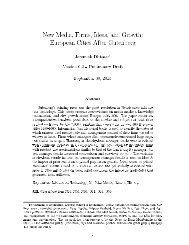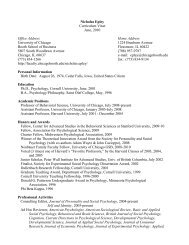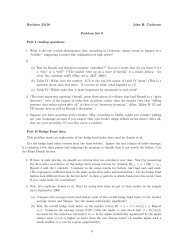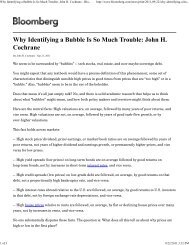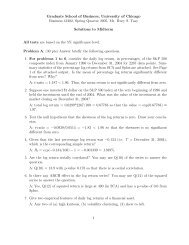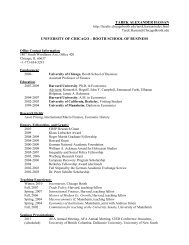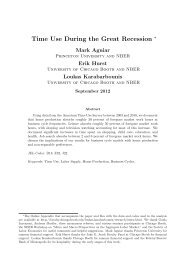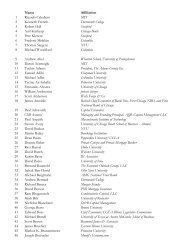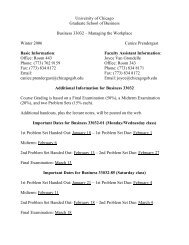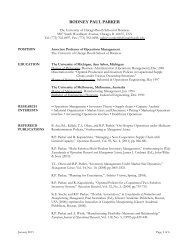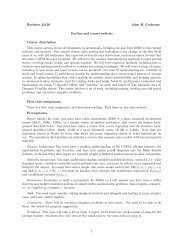by Milton Harris and Artur Raviv - Faculty
by Milton Harris and Artur Raviv - Faculty
by Milton Harris and Artur Raviv - Faculty
Create successful ePaper yourself
Turn your PDF publications into a flip-book with our unique Google optimized e-Paper software.
ehavior literature cited in the Introduction which documents a positive relationship between size <strong>and</strong><br />
extent of decentralization.<br />
Firms for which the cost of middle managers is high will become highly decentralized with no<br />
middle managers <strong>and</strong> little involvement of the CEO as they mature. Firms for whom middle managers<br />
are inexpensive, will first switch from the centralized flat structure to the matrix organization then to a<br />
decentralized hierarchy oriented toward exploiting the most likely interactions. Finally, firms for whom<br />
middle managers are neither very cheap nor very expensive will switch from the centralized flat structure<br />
to a centralized hierarchy. This centralized hierarchy may be designed to exploit either the more likely or<br />
the less likely interactions or may switch from the more likely to the less likely as the CEO’s opportunity<br />
cost increases. As these firms become even larger <strong>and</strong>/or more complex, the structure will shift in one of<br />
three directions. For firms in this group with the most expensive middle managers, the structure will<br />
become flat with no CEO involvement. For firms in this group with the least expensive middle<br />
managers, the structure will shift to the matrix organization, then to a decentralized hierarchy oriented<br />
toward exploiting the most likely interactions. For firms in this group with in-between middle manager<br />
costs, the matrix phase will disappear. Such firms will move directly to a decentralized hierarchy that<br />
exploits the most likely interactions. 10<br />
Further implications are available if we identify more specifically which interactions are most<br />
likely <strong>and</strong> which are least likely. Suppose interactions between functions relating to a given product are<br />
more likely than economies of scale from combining a function across products. In this case, if, as the<br />
size/complexity of the firm increases, the firm’s organization structure changes from one type of<br />
centralized hierarchy to the other, the progression will be from a divisional (P-)hierarchy to a functional<br />
(R-)hierarchy. Moreover, if the firm exhibits a decentralized hierarchy, it will always be a decentralized<br />
10 The statements regarding firms with intermediate middle manager costs are true in all cases<br />
except one. In that case, the firm never exhibits a centralized hierarchy (see Case 1 in the appendix).<br />
D:\Userdata\Research\Hierarchies\temp.wpd 29 February 22, 2000 (11:18AM)



